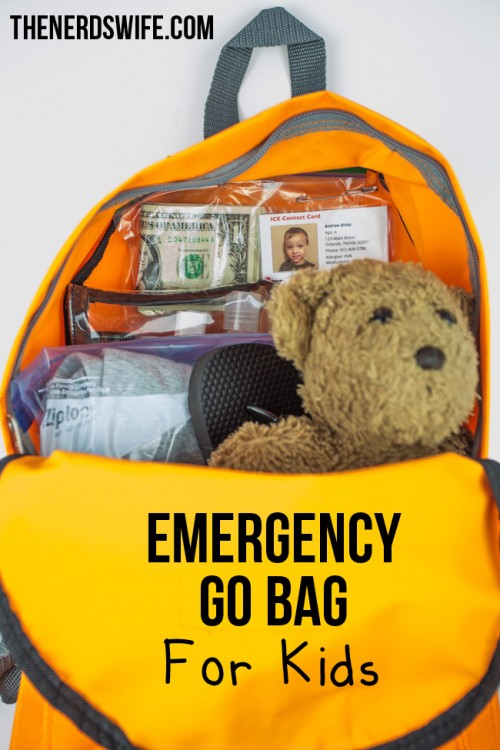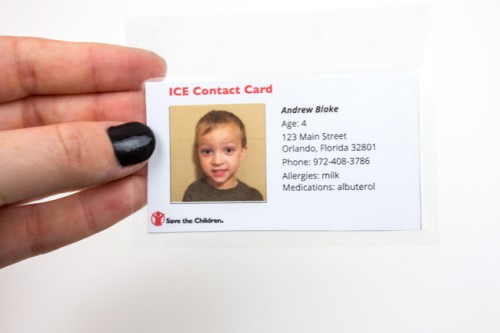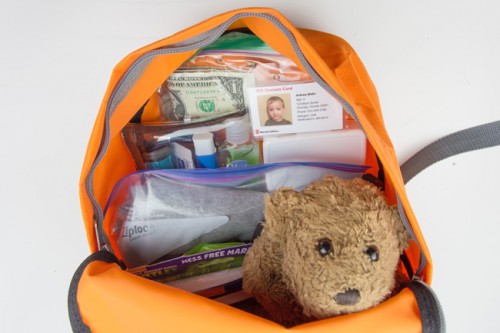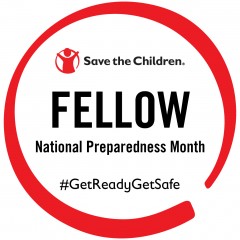
Do you have an Emergency Go Bag for Kids for each of your little ones? They’re *so* important; let me tell you why you need one.
What would you do if your child was separated from you during an emergency or natural disaster? Would they have the skills and resources they needed until you could find them?
It took four days for this mother to be reunited with her 2-year-old daughter during Hurricane Katrina. I can’t even imagine her fear or pain.
No one wants to think that a natural disaster could happen to them. But they occur every day, all over the world. Are you ready for when one strikes?
Here in Texas, we go through tornado season every year. There have been so many times that we’ve scrambled into the bathroom, bare feet on the tile floor, just praying that a tornado didn’t hit the house. I don’t know what we would have done if one had.
That’s why we’re making Emergency Go Bags for Kids. We want to ensure that each child in our family has all the items they need — at least for a little while — in case we are separated.
These bags are stored in our hall closet with easy access. If we hear a tornado siren, we can easily grab them and go. If it were to flood, we can easily grab them and go.
Emergency Go Bags for Kids

Here’s what we put in our Emergency Go Bags for Kids:
- A small backpack — we chose bright orange so they will be easily seen
- Waterproof flashlight
- Spare batteries
- Shampoo/Body Wash
- Toothbrush and Toothpaste
- Hand sanitizer
- Bandages with Antibiotic Cream
- Hand wipes
- Tummy relief (Tummygize Essential Oil)
- Gauze pads
- Snacks — granola bars and fruit pouches
- Bottled water
- Change of clothes
- Extra shoes
- $20 in small bills and change
- Paper and crayons
- Activity kits
- Comfort item — stuffed animal, blanket, etc
- ICE Contact Card
Of course, you can personalize the bag with your child in mind. Each member of the family should have their own go bag. Items like paper and crayons, activity kits, and a comfort items are important additions for kids because these things can help them cope during stressful situations, like emergencies.
Most children aren’t with their parents all-day, every day. Some have school during the day, some are at daycare while their parents work. In those situations, it’s important to have a way for emergency responders to identify your child so that they can be reunited with you.
That’s where an ICE Emergency Contact Card comes in. September is National Preparedness Month and we’re working with Save the Children to educate parents on this simple thing they can do TODAY to be ready for an emergency.

On the front, the ICE card has a photo of the child, their age, any allergies and medications, and their address. On the back are contact details for three grown-ups — mom and dad, and an “out of town” contact.
Plus, there are two copies — one to stay with the child, and one for the parents.
Be sure to print out your ICE contact cards now!

I added all the supplies and safety pinned the money and the ICE card to the top inside of the backpack. Now we are ready to “go” in case of emergency!

I am so excited to be a Save the Children Fellow. Thanks to Save the Children for doing everything they can to keep children safe and healthy all around the world. I’m so grateful to be part of this amazing group.

This is a great idea! I had to smile as my Andrew Blake is also allergic to milk and has similar hair color. 🙂
It’s good to tape ICE cards to carseats also. That way first responders know everyone’s Info. If parents are unconscious
What a powerful and important reminder. Putting together an Emergency Go Bag for each child is such a thoughtful and practical way to prepare for the unexpected. Thank you for sharing this helpful checklist — I’ll definitely be using it to create bags for my own kids.